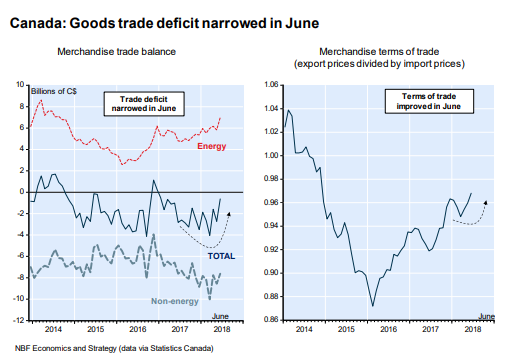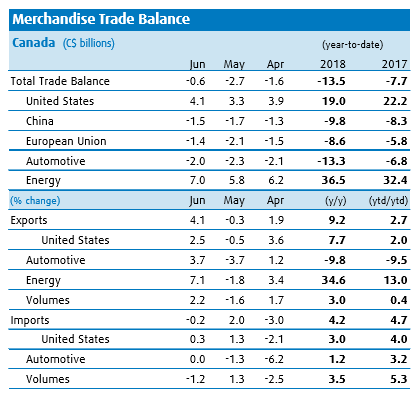Canada’s merchandise trade deficit narrowed to $626 million in June from a hefty $2.72 billion in May. The main reason for the strong improvement was a huge 4.1% increase in merchandise exports over the previous months. As the table and chart indicate, the improvement shifted Canada’s goods surplus with the U.S. up to 4.1 billion in June.
Canada’s exports increased 4.1% in the month, while imports edged down 0.2%.
In a related matter, Canada’s terms of trade in June were the strongest since November 2014. The terms of trade (TOT) is defined as the ratio between a country’s export prices and its import prices.
The terms of trade are used as a measure of a nation’s economic health. When a country’s TOT improves, for every unit of export that a country sells, it can purchase more imported goods. Therefore, an increase in the TOT is usually seen as beneficial because the country needs fewer exports to buy a given number of imports.
It is also important to remember that the aluminum and steel tariffs came into effect in June. Metal product exports fell 1.1% m/m in June. Steel exports declined 14.3% y/y in June, while aluminum exports rose 10.2% y/y. Thus far, the impact of the Trump tariffs seems rather minimal.
















Leave A Comment